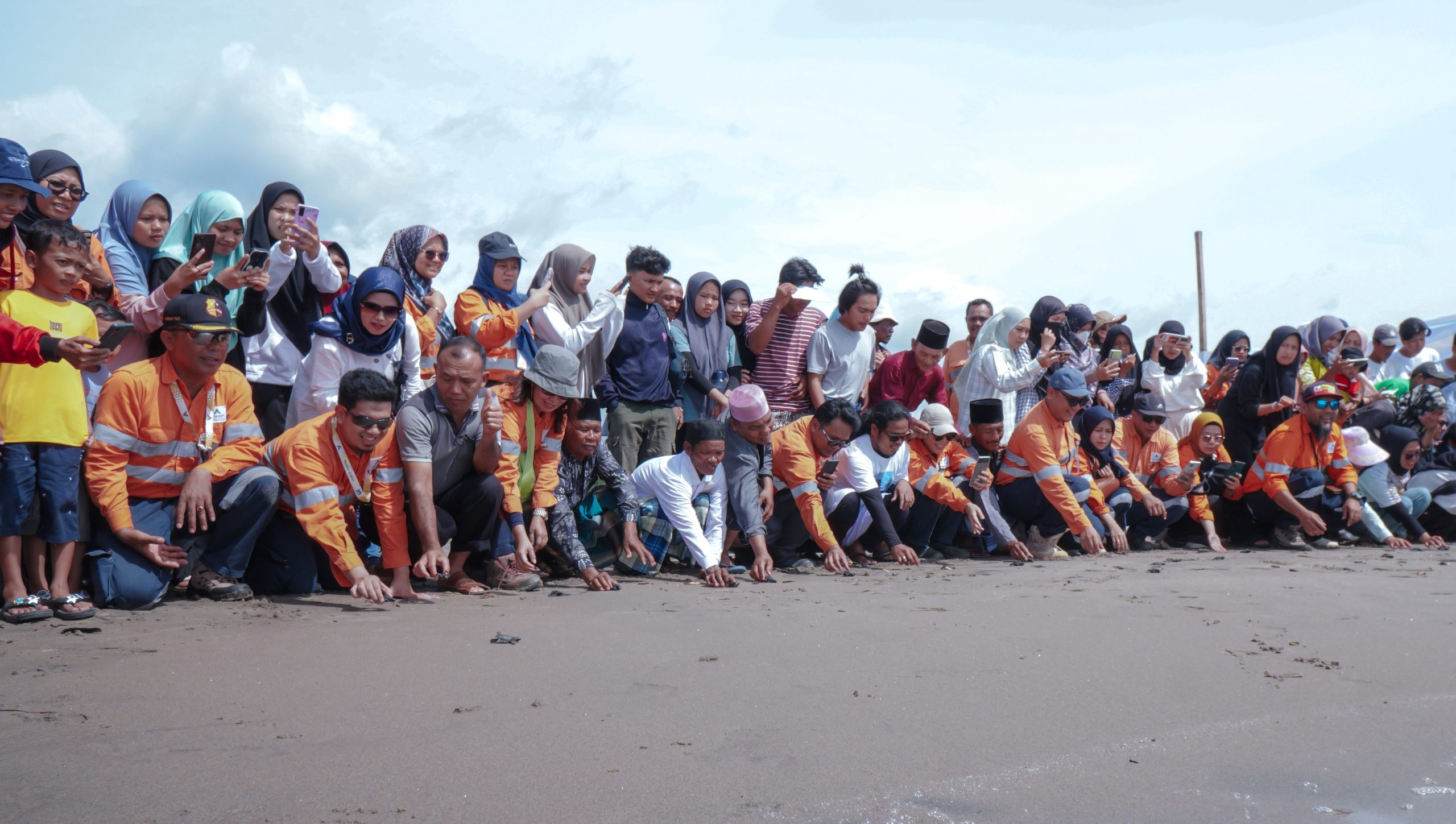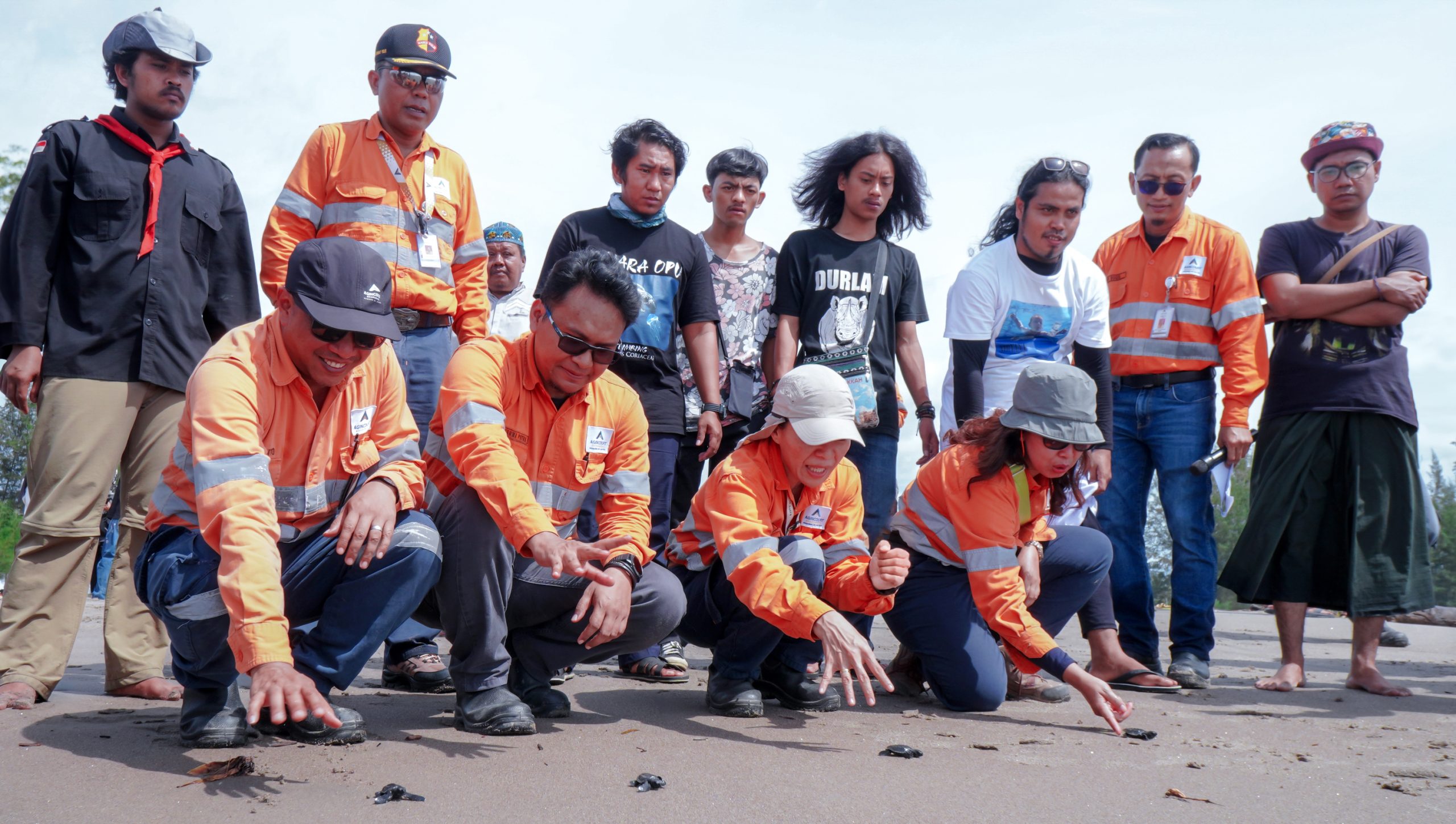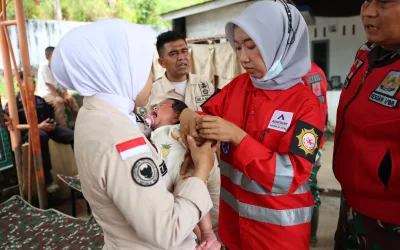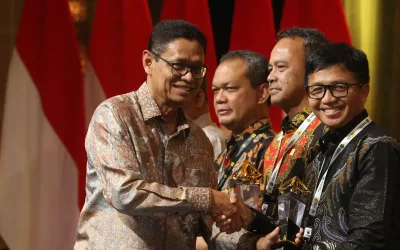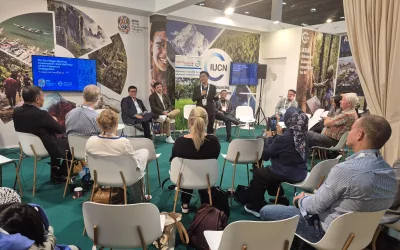Muara Batangtoru, 8 January 2024 – PT Agincourt Resources is ready to gradually release 1,000 hatchlings (baby turtles) throughout the first quarter of 2024 on the West Coast of Muara Opu, Muara Batangtoru District, South Tapanuli. The operator of Martabe Gold Mine collaborates with Ovata Indonesia Institute to carry out a long-term program which will include turtle observation through the provision of conservation facilities, the formation of patrol teams, egg and hatchling care teams, area security, coast guards, and the development of coastal conservation research.
Deputy General Manager Operations of PT Agincourt Resources, Wira Dharma Putra, said that in terms of environmental and biodiversity management, Company is committed to following and implementing good mining practices in accordance with the applicable regulations. PT Agincourt Resources (PTAR) often collaborates with several leading universities and researchers to achieve optimal conservation and formulate company policies regarding biodiversity management.
“Hopefully, the release of these hatchlings can be an important step in maintaining marine biodiversity and supporting environmental conservation around the operational area of the company. We are very proud to be able to collaborate with Ovata Indonesia Institute along with the community and nature lover communities of South Tapanuli to contribute to conserving the environment,” said Wira.
“Turtle protection is one of our current priorities because ecologically turtles are very beneficial for the balance of nature and human life, in this case turtles can be said as sea doctors. With the presence of many turtles in the sea, the marine habitat will be healthy because turtles can maintain the balance of the coral reef ecosystem chain and are vital for the availability of marine fish. “Therefore, in the future we plan to support turtle conservation activities on the West Coast of Muara Opu,” said Wira.
Ovata Indonesia Institute activist, Erwinsyah Siregar, appreciated PTAR’s commitment to conserving coastal and marine ecosystems, especially sea turtles which are included in the protected fauna category and are on IUCN (International Union for Conservation of Nature) red list and CITES Appendix I, which means their existence is endangered.
In addition to the threats from predatory animals and hunting by humans, turtle slow mating cycle is also a challenge in conservation efforts for this ancient reptile. Turtles can only mate and lay eggs when they are 20-30 years old.
“PTAR has become a leading agent in turtle conservation efforts and in the future, it can support Muara Opu Beach to become one of the turtle breeding centers in North Sumatra,” said Erwinsyah.
The West Coast of Muara Opu is the nesting coast for Indian Ocean turtles because five of six species of turtles in Indonesia are located at the site, namely the leatherback turtle (Dermochelys coriacea), hawksbill turtle (Eretmochelys imbricata), green turtle (Chelonia mydas), olive ridley turtle (Lepidochelys olivacea), and loggerhead turtle (Caretta caretta).
In managing biodiversity, efforts that have been made by PTAR include providing education or disseminating conservation programs to the surrounding community as well as researching the composition and diversity of flora and fauna in Martabe Gold Mine development area. Apart from that, PTAR carries out conservation in the sea and coast by contributing to the restoration of mangrove forests in Pandan Bay, Central Tapanuli.
South Tapanuli Regional Secretary Sofyan Adil Siregar also expressed his appreciation to PTAR. According to him, this activity may encourage the tourism sector in South Tapanuli.
“Hopefully, we can maintain this good cooperation of all parties. We hope that our efforts can improve the quality of the turtle habitat and ecosystem in Muara Opu,” he concluded.
